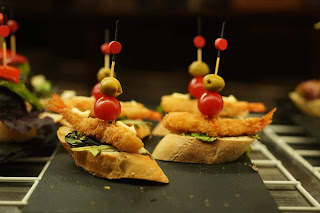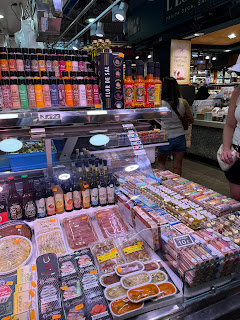October! Arguably the best month of the year! Especially in the Midwest. Temperatures are finally coming down and fall colors are in bloom. AND it’s Friday morning! My absolute favorite time of the week. Friday mornings have a very chill vibe about them. It’s technically a workday but it’s usually more relaxed. It’s easy to look forward to a weekend of relaxation, time with loved ones, and for many in this Big Ten town…college football.
I’m enjoying my Friday morning by sitting here with a fresh cup of coffee on my porch and hanging with Otis. (Otis, our golden doodle, loves slow mornings more than I do!) My first meeting isn’t till 10 so I have some time. I’m lucky and I fully appreciate my fortune.
My wife on the other hand has a real job. By “real job”, I mean your traditional 9 to 5. She works at a hospital and is absolutely our breadwinner. In the 11 years we’ve lived in this town, she’s been promoted five times! (I’ve been promoted once in that time but who’s counting?) And she’s incredible. She has an engine that never turns off, a positive spirit, and I have to imagine she’s fun to be around on the office.
When we moved here, she was the trailing spouse. Now, the one luxury college professors don’t have is being picky in where they get to live. You go to where the universities are located. (Fortunately, I happen to LOVE college towns - best energy.) If we were to move again, however, I would be the one following. And that shift has been an interesting experience. My ego has to be put aside. Any decisions we would make would be in the best interest of our family. So if I have to be a barista on the coast of California, so be it! ;)
It’s more common for people in business and industry to bounce around, move up the ladder, and make more money. That brings me to the second luxury college professors don’t have…the ability to make excessively large amounts of money. The money is not bad by any means. In fact, studies have shown the correlation between income and happiness is strongest at around $80k per year as opposed to $800k/year. And it may be a cliché to say, but I personally am not strongly driven by money. Don’t get me wrong, I enjoy a 2% raise as much as the next guy (why are you laughing?), but if I were in this for the money, a college professor I would not be. (I’d probably be like a….business scientist or something. I actually don’t even know if that’s a thing. I’ll stop.)
I am trying to get promoted though you know. It’s not like I don’t have ambition! But in the world of academia, promotions are much less frequent occurrences. For example, if I were to be promoted five times I could honestly be the president of the university (maybe the academic world!). In the world of academia, it’s common to be an assistant professor for six years before going up for promotion to associate (oooh fancy!). That first promotion often times comes with something called tenure. Now tenure is not a free pass to do whatever the hell you want for the rest of your career. You still have to do the basic duties (teach, research, some service) and it is possible to get fired if you do something really bad. But what tenure offers is academic freedom. Being able to explore unknown topics, even if they’re controversial…without government oversight. (Cough…Vaccine therapy, critical race theory…cough, cough.)
I was promoted to the associate level after six years. Now six years later, I’m trying to be promoted to “full professor” (double fancy!). In order to get there, however, I have to demonstrate that I have an “international reputation” for my scholarship. How you go about defining that is not always clear but my portfolio (which is well over 100 pages in length…thank you very much) is reviewed by no less than 20 full professors from my own institution and from other peer universities. It’s required that you receive grant funding to support your research, publish that research regularly in good journals, and that others around the world read and cite your research. I also have to be a good teacher and mentor, and conduct a lot of service for my university and the profession. The process takes around a year to complete. And at the end (if I’m invited to the club) it means…well I’m not sure really. A little more money (hello 5% raise!?) and a new and ironically shorter title (Professor vs Associate Professor). For me personally, it also means that I’ve achieved the highest professional level for a professor, which is nice. ;) Promotion to Full Professor could also open doors to future leadership/administration positions if that were ever of interest. (More on this later.)
For now, I wait to learn my professional fate. Have I done enough? If yes, then I’ll be buying that Kirby vacuum I’ve had my eye on. If no, oddly nothing really happens beyond the personal embarrassment. I don’t lose my job. I just stay at the same level and live to try again I suppose. Either way, I anticipate this will be a time for some deep reflection on the next chapter.





























